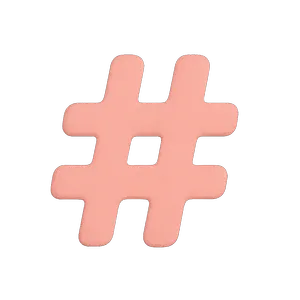In the digital age, the intersection of technology and art has given rise to innovations that were once thought impossible. One such marvel is the AI-generated headshot, a product of advanced artificial intelligence that has stirred both excitement and skepticism in the world of photography.
Understanding AI-Generated Headshots
At its core, an AI-generated headshot is a hyper-realistic human face, crafted not by the hands of a photographer but by the calculations of an algorithm. These faces, while lifelike, do not belong to any real person. Instead, they're the result of neural networks trained on vast datasets of human faces, producing unique headshots for a myriad of purposes, from advertising campaigns to video game characters.
The creative industry has welcomed this innovation with open arms. The ability to generate realistic faces that don't exist in reality has unlocked new avenues of expression and storytelling. Designers and marketers can now represent diverse demographics, ensuring inclusivity in visual media.

The Technology Behind the Magic
The magic behind AI-generated headshots lies in Generative Adversarial Networks (GANs). In this setup, one network crafts images, while another evaluates their authenticity. As they spar, both networks improve, leading to the creation of headshots that can rival real photographs in realism.
This process requires vast amounts of data. Neural networks digest thousands, if not millions, of human face images, learning the nuances that make a face appear genuine. From the texture of the skin to the play of light and shadow, the AI learns and then recreates, producing headshots that mirror the realism of its training data.
The Evolution of AI in Photography
AI's influence isn't limited to generating headshots. The photography landscape has seen the rise of AI-powered editing tools, image recognition systems, and even drones that can autonomously capture stunning vistas. These tools have democratized photography, making professional-grade tools accessible to enthusiasts.
Yet, AI-generated headshots stand out as a testament to how far technology has come. They offer a glimpse into a future where AI might craft entire scenes, complete with props and backgrounds, or assist photographers in refining their shots based on established artistic principles.
Weighing the Pros and Cons
Like all innovations, AI-generated headshots come with their set of advantages and challenges.
The Upside
The flexibility AI offers is unparalleled. With the ability to generate countless unique faces, businesses can experiment with diverse visual identities. For instance, a fashion designer can showcase a collection on a range of AI-generated models, bypassing the exhaustive casting process. This not only saves time but promotes inclusivity.
Moreover, the efficiency and cost-effectiveness of AI-generated headshots can't be ignored. Small businesses can refresh their websites with professional team headshots without the logistical nightmare of coordinating photoshoots.
The Challenges
However, there's a flip side. Over-reliance on AI might stifle human creativity. While AI can craft visually stunning headshots, capturing the essence and emotion that a human photographer brings to a session is a tall order. There's also the risk of AI-generated faces appearing too perfect, lacking the quirks that make human faces intriguing.
Ethical concerns, especially around privacy and unauthorized use of likenesses, are paramount. As AI becomes more sophisticated, regulations must evolve to protect individual rights and prevent misuse.
Inconsistencies in AI-Generated Headshots
While AI-generated headshots have made significant strides in realism, they aren't without their flaws. One of the most notable challenges is the occasional inconsistency in the images produced. For instance:
- Facial Symmetry: While human faces are generally symmetrical, they're not perfectly so. AI-generated images sometimes produce faces that are too symmetrical, giving them an unnatural appearance.
- Hair and Accessories: AI can sometimes struggle with complex hairstyles or accessories like glasses and earrings. The result can be hair that seems to defy gravity or glasses that float slightly off the ear.
- Background Anomalies: The background of AI-generated headshots can sometimes contain irregularities or patterns that don't typically occur in natural settings.
- Emotional Depth: While AI can replicate facial expressions, there's often a lack of genuine emotion behind those expressions, making the face seem flat or distant.
These inconsistencies, while minor, can make the difference between a headshot that feels genuine and one that feels artificial.

AI Headshots vs. Traditional Photography
Traditional photography, with its ability to capture raw emotion and authenticity, has its unique charm. The genuine interactions, the play of natural light, and the candid moments make traditional photos irreplaceable.
However, AI-generated headshots offer a level of customization that's hard to achieve with traditional methods. They're perfect for scenarios demanding specific visual aesthetics or when rapid iterations are required.
Cost and Time Efficiency
While traditional photography offers depth and connection, it can be resource-intensive. In contrast, AI-generated headshots, with their quick turnaround and reduced costs, offer businesses an efficient alternative.
Ethical Considerations
The rapid growth of AI-generated headshots has brought forth ethical dilemmas. Issues of privacy, data security, and the potential impact on professional photographers are pressing concerns. As we embrace this technology, it's crucial to tread with caution, ensuring that we uphold ethical standards and protect individual rights.
AI-Generated vs. AI-Edited Headshots
It's essential to differentiate between AI-generated and AI-edited headshots:
- AI-Generated Headshots: These are images created entirely by AI based on a human face as the base model. The result is a face that looks like but doesn't technically belong to any real person - it is crafted based on patterns the AI has learned from analyzing thousands of real images.
- AI-Edited Headshots: These are real photographs of actual people that have been enhanced or modified using AI. The AI can perform tasks like background removal, light correction, and even minor touch-ups to improve the overall quality of the image. The base image, however, is of a real person.

How Snapbar's Studio Fits In
While the debate between AI-generated and traditional headshots continues, there's a middle ground that offers the best of both worlds. Snapbar's Studio, a virtual headshots platform, provides business headshots for remote teams, ensuring consistent quality. It's not about AI generation but AI-powered editing, ensuring each headshot aligns with company guidelines.
With features like API integration, active moderation, custom fields, and smart file naming, Studio offers a comprehensive solution for businesses. It's a testament to how technology can enhance, not replace, the human touch in photography. For those interested in seeing the quality and variety of headshots produced, the headshots example gallery provides a visual showcase. For businesses aiming to achieve the best results, the guide to business team headshots offers valuable insights. And for those curious about the process, understanding how to take good corporate headshots can be enlightening.

The Road Ahead
The future of AI-generated headshots is teeming with potential. As algorithms become more refined, we can anticipate even more realistic and diverse headshots. While they might not replace traditional photography, they will undoubtedly become more prevalent, reshaping the photography landscape.










-p-500.webp)



.jpeg)















